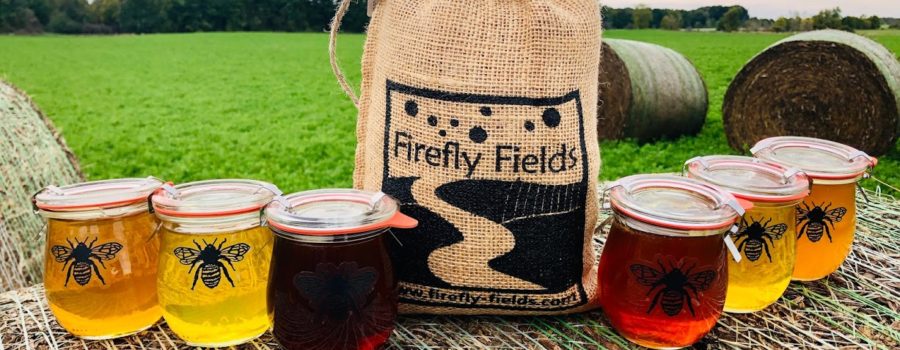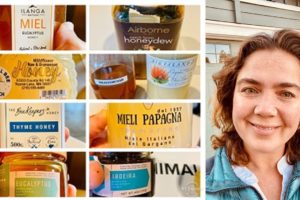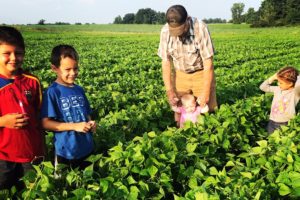(Originally published January 15, 2020)
I love the start of a new year. It’s a time to reflect on things accomplished and things left on the table, and a chance to regroup, refocus, and reposition yourself for happiness and success. I know Virginia and I have had fun talking about this past year for Firefly Fields, and we are both super psyched for 2020!
One of the goals at the top of our list for this upcoming year is being more consistent bloggers. We want to make sure you always know what’s going on at Firefly Fields, be it in the field or in the hive. This increased awareness between where your food is grown and where it ends up at the dinner table is an important connection, and one that is often lost, between the food producer and the food consumer. This connection is one of the core values of Firefly Fields, and in this next year, we will continue to stay true to this value by bringing to market high-quality food products grown on our farm (i.e., single-origin food) along with the stories of the people that produce them.
So, as the first post of many more to come in 2020, I wanted to review a few highlights from this past year at Firefly Fields.
Dodging raindrops
Dancing, singing, stomping puddles are all things that are fun to do in the rain. Farming is not as fun to do in the rain. From January through June each month was wetter than the one before. In May and June, our key months for planting, there was at least a tenth an inch of rain (often more) every 2 or 3 days, and with cooler than average temperatures the soil just couldn’t seem to dry out. This year was the first time in the farm’s 40-year history that corn and beans weren’t planted. Luckily, we caught a small window in April to get some oats in on our new field.

With the field being fairly well-drained, this turned into a pretty nice crop of oats and yielded plenty of straw for the livestock. We were also pretty excited to get some soil amendments and cover crops on the field come summer. This should set up nicely for a clover crop in 2020 heading into our first organic corn crop in 2021.

BEEginning again
Being a bee is hard work, and life gets much harder when you open up the door after a long winter in the hive and are greeted with cold, wet weather. We lost a couple of hives this year linked to the rough weather. So with plans coming into this year of increasing production anyways we doubled our number of hives and implemented some added measures to build resilience and strength in our operation. We diversified our bee population and are now monitoring multiple different breeds for production, activity, and resilience to things like mites and cold weather. Also, we have incorporated more regular mite checks into our routine.

Even with the difficult spring, our hives did amazing with great production from July through September!! We were even lucky enough to have the opportunity to set up on a buckwheat cover crop yielding an amazing late-season honey crop! The bees went crazy and treated us to a nice crop of dark, yummy buckwheat varietal honey.

Smiling faces
A major goal for us in 2019 was to expand sales into some of the local farmer markets with Janette. We felt like this was a great opportunity to bring a complete package of quality, organic grains, beans, honey, and beef to the consumer on a local scale. The reward from this was amazing and we were met with so many smiling faces, great conversations, and new customers.

By the end of a great market season, we were able to deliver most of our 2019 inventory to happy customers, and we are looking forward to expanding our supplies and products for the 2020 season. We do still have some honey and grain reserves in stock, so be sure to get your orders in!
A whole new world of honey
We are always thinking about ways to innovate and improve on the products we produce. One opportunity that we have identified is highlighting the amazing variety of honey that can be produced from the vibrant, diverse landscape on the farm.

Stemming from a long history in wine-making, there is increasing interest in identifying and experiencing foods that take on flavors unique to specific locations and practices. For honey, this provides an opening into a world of varietal, single-origin honeys. Virginia was recently certified in honey sensory evaluation and we’re now looking forward to being able to describe and characterize the flavor, texture, sight, and smell of honeys we produce on the farm using standard sensory techniques. This gives you, the consumer, an open spot at the table to taste and experience the landscape that we call home.
Reflecting on this past year, the struggles, the surprises, the amazing people, Virginia and I can’t help but be grateful and inspired. Turning the corner into 2020 we can’t wait to see what each day brings and are looking forward to continuing to bringing the best organic foods and honey to your table!







Leave a Reply
Your email is safe with us.